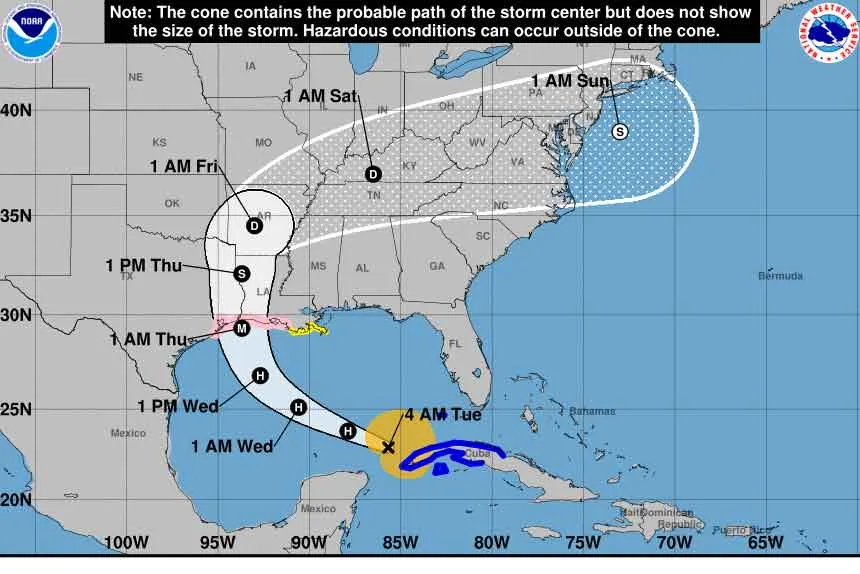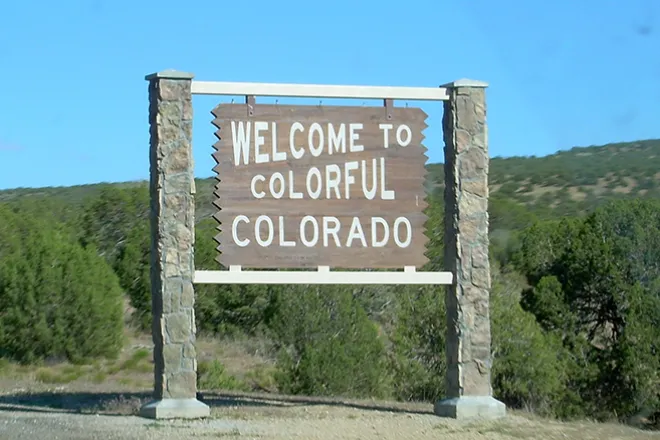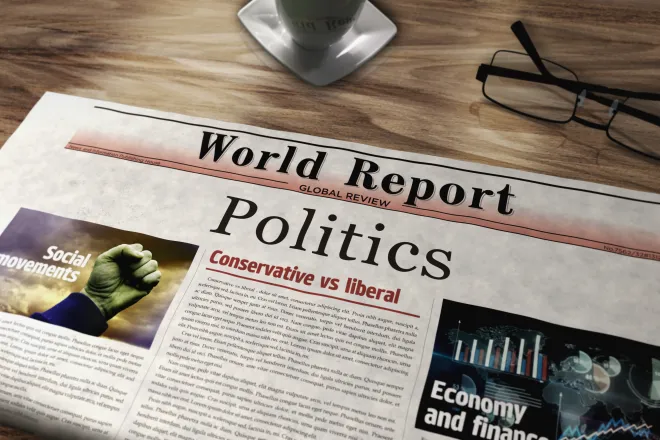
Extractive industries in, environmental protections out in plan for federal lands
The Trump administration’s revised Department of the Interior strategic plan calls for expanded fossil fuel development across federal lands, while omitting any reference to public land sales first raised in an earlier draft.
Required under a 1993 statute and in 2010 amendments to that law, the draft plan outlines high-level goals for Interior’s management of 480 million acres of federal land, including about 24 million acres in Colorado. Language emphasizing a commitment to extraction is particularly stark. In a break from contemporary descriptions of the natural resources under federal management, the Trump administration declared in a proposed introduction to the plan that the department “is the U.S. balance sheet, and natural resources are the country’s assets.”

© amaxim - iStock-144283539
“These lands — rich in energy, minerals, biodiversity, and recreational value — are worth trillions of dollars to current and future generations,” the draft introduction continues.
Chris Winter, executive director of the University of Colorado Law School’s Getches-Wilkinson Center for Natural Resources, Energy, and the Environment, said the draft plan confirms what many in the environmental community have feared: a shift away from conservation in favor of extractive industries.
“The administration is going to emphasize extractive industries and fossil fuels on federal public lands and is going to move away from conservation and renewable energy,” he said.
The plan makes no mention of renewable energy or even of climate change, a sharp contrast from Interior’s current guiding template. The Biden-era 2022–2026 strategic plan emphasized climate resilience and a transition to clean energy. The new draft, by contrast, omits the subject of climate entirely. That is one of several breakpoints critics say reflects a reversal in federal priorities.
The absence of any mention of renewable energy in the strategic plan signals, to some experts, a deeper shift in federal priorities. Wyatt Sassman, an associate professor at the University of Denver’s Sturm College of Law who specializes in natural resources matters, thinks a federal abandonment of that imperative is already underway.
“At least some reporting has suggested that (the) Fish and Wildlife (Service) has stopped issuing permits for wind energy projects,” he said. “I don’t see any legal process for that. And it’s seemingly inconsistent with the way it’s treating fossil energy projects.”
It may undercut environmental review
President Donald Trump did not wait very long after taking office to tighten restrictions even on wind energy production that does not rely on public lands for facilities. Seventeen states, including Colorado, and the District of Columbia launched litigation May 5 in a Boston-based federal court in an attempt to prevent the administration from executing his January 20 executive order that purports to halt offshore wind energy development.
Trump’s team at Interior is expected to pursue a continued sharp reversal, facilitated by a likely attempt to deregulate oil and gas activities on Bureau of Land Management and other lands and waters under Interior’s control. Authors of the document explain that the department “will focus on expediting leases and streamlining and cutting regulations while promoting conservation.” Moreover, “by offering economic incentives and better access to energy resources, Interior will encourage private investment and create more American jobs.”

USFWS - public domain.jpg
Environmental advocates say they are not surprised by the draft plan’s focus on stimulating the national economy, but they warn that the plan may presage a determined effort to evade or undercut processes mandated in public land laws. The danger in that approach, Sassman said, is that Interior decision-makers may act in a manner that is blind to environmental consequences. “My sense is that it will get in the way of them trying to make good, well-reasoned decisions,” he said.
The thing that really concerns me is that what I'm seeing is a lot of efforts to sort of cut any type of public participation, to cut any type of perceived red tape.
Sally Paez, a staff attorney at Santa Fe-based New Mexico Wild, warned that Interior’s language about process streamlining signals an intent to sidestep longstanding environmental review laws.
“The thing that really concerns me is that what I’m seeing is a lot of efforts to sort of cut any type of public participation, to cut any type of perceived red tape,” she said. “And, by ‘perceived red tape,’ what I mean are bedrock environmental laws that are in place to make sure that extraction is done in a way that doesn’t destroy our very limited water supplies in our arid state, and doesn’t impact big game corridors or endangered species and things like that.”
Environmental advocates warned that Interior’s approach may undercut review even under the 1969 National Environmental Policy Act. Paez called the effort “unprecedented,” citing fast-tracked reviews and diminished public comment periods.
The administration did not provide in the newest version of the draft strategic plan any details about how much additional logging Interior will seek to advance on BLM lands. A March executive order directs increased logging on BLM and Forest Service lands, and the strategic plan calls for “active timber management” to reduce wildfire risk but does not specify locations at which more timber extraction would occur or the scale of tree removal.
Grazing and mining are not specifically addressed in the May document, though the drafters note a commitment to “clean coal” and reiterate a traditional adherence to “multiple-use land management.” According to the draft plan, that approach will “ensure the country’s public lands can be used for recreation, grazing, timber sales, mining, and mineral exploration, all of which provide revenue for the U.S. government.”
Public land sales dropped
Beyond extractive industries, the strategic plan outlines priorities for water infrastructure but avoids mention of critical regional shortages. Interior would “upgrade and maintain water infrastructure to ensure water supplies while also promoting water conservation and reuse for drought resiliency.” But there is no mention in the document of how the department would approach questions of reduced supplies in the Colorado River Basin and California rivers and, other than a nod toward hydropower as an energy source, the challenge of assuring adequate flows for wild salmon in the Columbia River system and other anadromous fish freshwater habitats.
Interior offers little detail about wildlife protection in the draft strategic plan, at least beyond mention of promoting hunting and fishing on public lands and a promise “to remove harmful invasive species, delist endangered species once recovered, and involve local communities in decisions about managing nature and wildlife.” To Winter, this lack of clarity raises a risk that Interior may fail to advance the goals of the Endangered Species Act.

“We’ve already seen very aggressive steps to roll back protections under the Endangered Species Act,” he said, pointing to a recent proposal to redefine the ESA’s definition of harm to exclude damage to vital habitats. “We suspect that the administration intends to undermine protections for wildlife moving forward.”
The draft strategic plan includes a stated goal of strengthening “government-to-government relationships with Native Americans and Insular Areas.” That objective, the document says, would involve “shared management of land, increasing investment in education and jobs programs, and managing trust assets for beneficiaries.”
However, the plan does not mention existing co-stewardship arrangements at major national monuments in the West, such as Bears Ears in Utah and Chuckwalla and Sáttítla Highlands in California. It also does not address whether those monuments will retain their protections under the Antiquities Act.
The draft strategic plan’s utilitarian perspective may nevertheless have little impact on expected legal battles over the department’s efforts during the next few years to facilitate oil, gas, and coal production and mineral exploration, logging, and grazing.
“I’ve never seen the strategic plans relied on in a legal context,” Sassman said. “There are other kinds of legal actions they will have to take in order to effectuate these goals.”
A first effort at a 2026-2030 plan, released in April, also declared that Interior’s first priority will be to “restore American prosperity.” That version, unlike the one Interior released last month, also explicitly raised the prospect of public land sales. Winter said that the exclusion of that idea from the new rendering should not be taken as a signal that the administration has abandoned the proposition.
“I don’t think the administration is backing away from that idea,” he said. “This issue is being taken up by Congress as part of the (budget) reconciliation process and this is really an issue that will be determined by Congress and not by the department because that’s where the authority lies.”
The public will have an opportunity to comment on the plan, once Interior finalizes a draft. The department has not yet posted it at regulations.gov, the federal government’s online portal for that purpose.

















